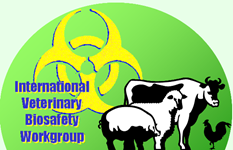

About the IVBWG
Veterinary high containment facilities share a similar mandate in countries around the world and face some unique challenges. They are never designed "off the shelf" and usually provide 24/7/365 emergency response for outbreaks of transboundary diseases. Within the national veterinary infrastructure they are among the most expensive facilities to maintain. Duty holders from veterinary high containment facilities, vaccine production facilities, and select few human level 4 containment facilities join forces in the IVBW. They exchange design solutions, protocols for the safe operation, and improvements for the biosafety of the facilities.
The facilities have to manage an often difficult balance between Keeping It Simple and the applying the latest and most sophisticated technology. In the absence of quantitative data on individual layers of protection, facilities are almost forced down the route of the most sophisticated protection systems until the scientific data is provided to prove the adequacy of simpler controls. At the same time many facilities have to maintain facilities operational on small budgets and have to replace engineering controls with protocols, where the engineering controls are too expensive or rely on services that are more expensive and often more unreliable than well trained operators.